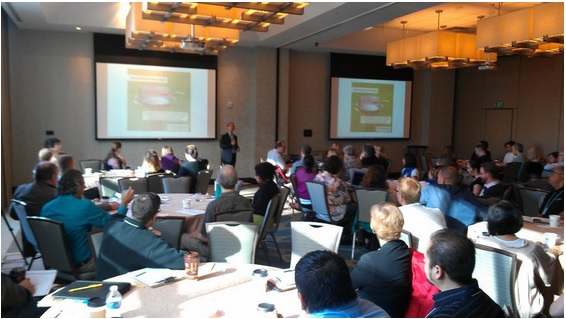It’s Complicated: New Users' Challenging Relationship with CiviCRM

In case you missed it, our team recently presented at the CiviCRM User Summit, a one-day conference that brings together users, consultants, and developers to share ideas and skills, and discuss features of the popular, open source CiviCRM constituent relationship management (CRM) tool. I had the opportunity to moderate the NDI session at the summit, which our friends at AGH Strategies recorded and will be making available in a few days. Until then, I thought I would recap our presentation and share some highlights from the event.
We had a stellar lineup on our panel, which kicked off with David Kuennen (NDI) speaking about his experience training NDI’s partners in Eastern Europe on how to use CiviCRM to better manage their contacts. As David put it, the objective of his training sessions was quite simple: to help groups develop voter files to better engage new members and re-engage existing ones. Although he described the process of training new CiviCRM users as having gone well overall, David recounted how CiviCRM’s range of features made training database administrators quite cumbersome (if you recall, this sentiment was echoed by the usability test participants I wrote about in a previous blog post).
Next up on our panel was Mahvash Taqi (former NDIer, now with Internews) who described her experience of managing a CiviCRM-enabled project for NDI. Mahvash touched on a range of challenges she faced, including recruiting and onboarding developers, coding and testing prototypes, and managing the outreach and marketing of the tool. Her central point was that designing CiviCRM with a user in mind was an iterative process that took a lot of work. As a project manager at NDI, she had to invest time in rounds of usability testing in order to expose shortcomings in the tool she was helping to develop for our partners in the field.
To round off our conversation, Maggie Epps (AGH Strategies) shared her insight (from a developer’s perspective) on testing the usability of CiviCRM with staff at NDI, which Mahvash previously wrote about. What I enjoyed most about Maggie’s presentation was the distinction she made between what CiviCRM was designed to do (manage large amounts of data) and the expectation that first-time users often have of the tool (to be simple and easy to use). Maggie highlighted the trade-offs between developing new features for CiviCRM and increasing usability, as well as the limitations of trying to achieve both aims as a developer.
Our session concluded with a facilitated group exercise where we asked participants to discuss a hypothetical use case for CiviCRM. The case asked participants to consider a scenario in Tunisia, where a civic organization was working to ensure that citizens could come together and advocate for political change. In order to achieve that aim, the group would need to recruit members, raise funds, and explain their principles and policies to their members, the media, and the public. The members of our hypothetical civic organization (mostly Arabic and English speakers) had decided to adopt CiviCRM to manage their contact information, however given a number of infrastructure challenges (namely issues with low bandwidth and poor Internet connection), as well as political challenges (namely the inability to assemble and access the Internet freely) they were finding it challenging to use CiviCRM for the first time.
We asked participants to work together to identify some challenges that a group like the one in our scenario might face when adopting CiviCRM, given the technological and political environment they were operating in. We also asked them to discuss how CiviCRM could be used to address those challenges, either by developing new features to the tool or adapting existing ones. We had each small group report back on what they discussed and heard some great solutions, including developing an offline synchronization interface of CiviCRM to overcome the challenge of using the tool in low-bandwidth environments and using an encrypted interface to overcome security challenges in closed societies where the tool might be used.
Overall, the CiviCRM summit was a great opportunity for us to share lessons learned about using the tool to support NDI programming and come together with other users, consultants and developers to share ideas on how to scale the use of the tool moving forward.
